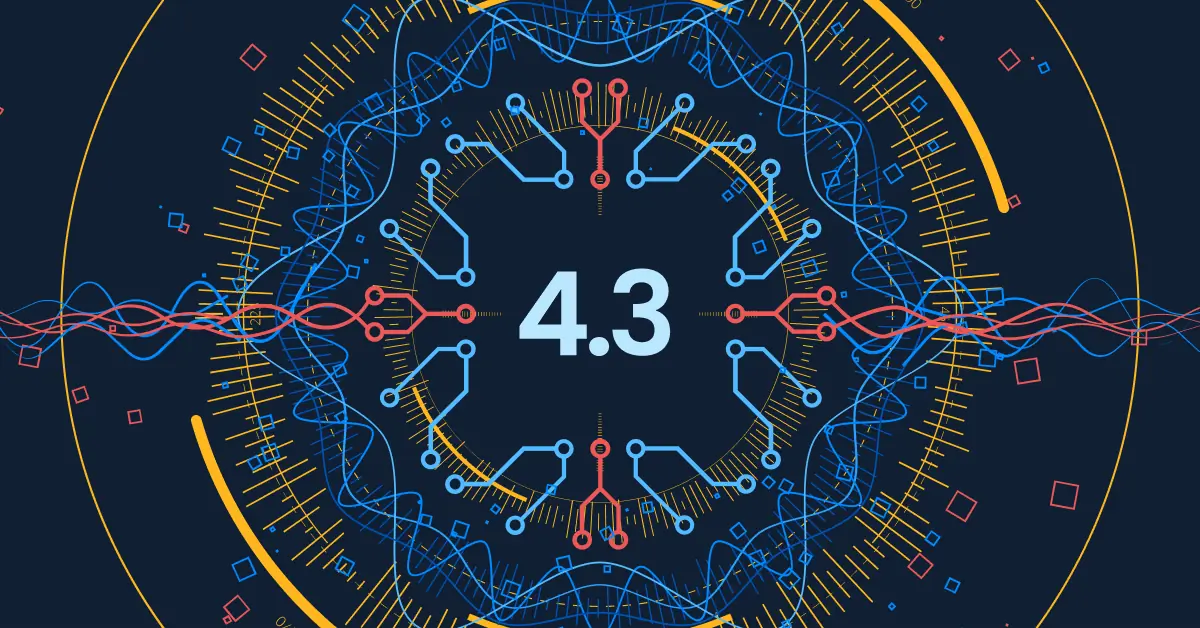We are very proud to present the latest release of StackState: 4.3! This release is yet another significant step towards our vision: providing our customers with a fully autonomous operations process using the 4T Data Model.
In short, we've improved StackState in the following ways:
Automatically relating changes to likely causes
With the 4.3 release, our existing relating changes to incidents -feature is extended by automatically relating problems and changes that were the likely causes of these problems. Also, we made sure to show you a diff of every change. This helps you to immediately identify the exact change that caused a problem.
Getting to root cause faster
We added the ability to investigate a problem including all its context in a sub-view. This enables you to focus all four perspectives (Topology, Telemetry, Events, and Traces) on all components related to a problem and thus immediately identify the root cause of a problem.
We’ve improved the updates users receive; these updates now also include contextual updates on problems. This gives a more complete overview of a problem, including its underlying cause(s).
Autonomous Anomaly Detection (AAD) is now generally available
Our autonomous anomaly detection eliminates the need to manually configure the system to start monitoring for anomalies. Our approach marries the information from systems under observation with how users interact with the system to automatically identify which areas to monitor, train, and apply algorithms to detect anomalies. There is no set up or data science expertise required. Identified anomalies are used in our automated root cause analysis to lead our users to the cause of problems. In StackState 4.3, we also created the option to alert on anomalies - which is a feature specifically requested by our users. In many cases alerting on anomalies is not needed, but in certain cases (when focusing on specific KPIs, for example) it can be very helpful since it helps with the early detection of problems.
More integrations
StackState extended its Kubernetes and AWS integrations with more signals and supported services.
Immediately relate changes to incidents
Today's dynamic IT landscapes are continuously changing and evolving. Practices like Continuous Integration and Continuous Delivery push out software changes at the rate of tens or even hundreds of times each day. The same goes for modern DevOps practices and their infrastructure changes. Since continuous changes are often the cause of problems, it is vital to keep track of these changes. Therefore, StackState records these changes along with their topology.
In previous releases, we added support to register changes in StackState. With the 4.3 release, we automatically relate a problem to the changes that are likely the causes of that problem. This shows you immediately which of the changes caused the problem.
Receive context-rich alerts
Responding to an IT incident usually starts with an alert that indicates a problem. Alerts coming from regular IT monitoring systems usually show the metric that has crossed some pre-configured threshold - but not much more than that. Using its 4T Data Model, StackState knows far more about the issue, including the root cause and what services are impacted. This is invaluable information for a first responder to quickly solve the problem.
StackState previously sent all alerts related to a problem to any notification or ITSM system. With the new release, StackState can update the problem with information while the problem progresses - without sending new alerts. This way, you can choose to only receive an alert when a new, important problem occurs - without getting buried in notifications related to a problem you were already aware of. After all, you only want to get up at night when something bad is happening, and this update does exactly that.
Integrate with Dynatrace, Docker Swarm, and many more
We know that the more complete the map of your IT landscape is, the easier it becomes to identify and fix issues. That is why we continue to expand the number of IT systems StackState integrates with.
Here are some of the new integrations that are included in StackState 4.3:
Extended Dynatrace integrations with Topology + Events
Extended Docker Swarm Support
Extended Kubernetes Support
Extended ServiceNow Support
And many more smaller improvements on many integrations
Hop on the fully autonomous operations boat
If you are an existing StackState customer, you can further improve your IT operations processes with these new updates today. Not using StackState yet? Sign up for a demo to learn how the StackState’s Topology-Powered Observability Platform simplifies your IT monitoring processes - to get to the root cause and solve problems much quicker.



